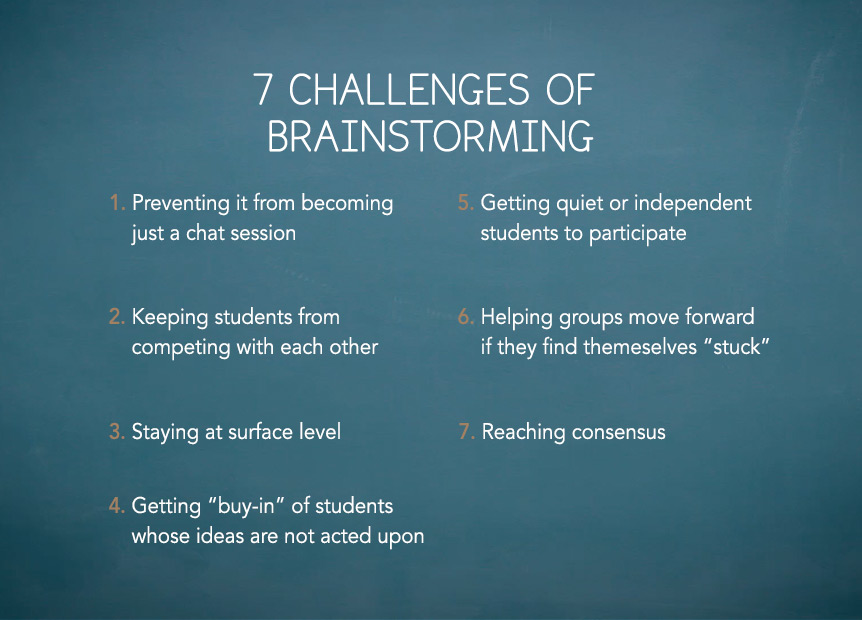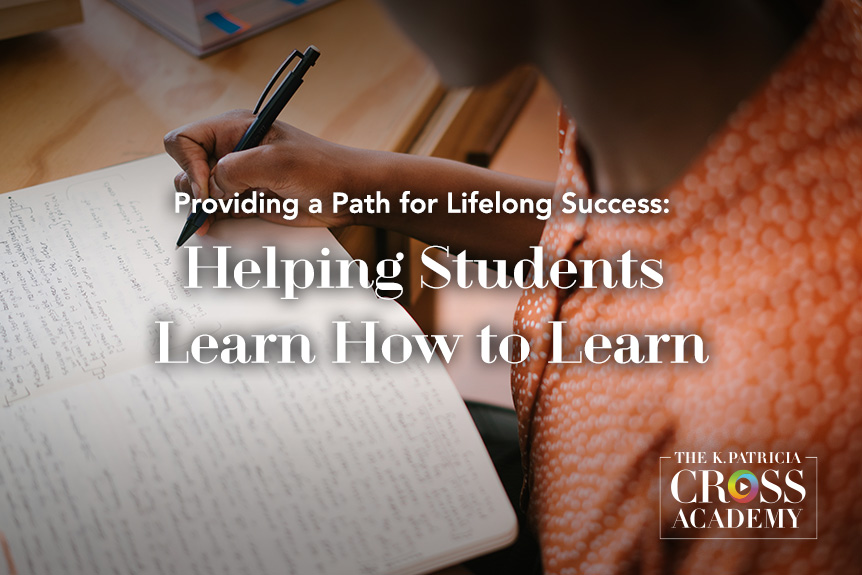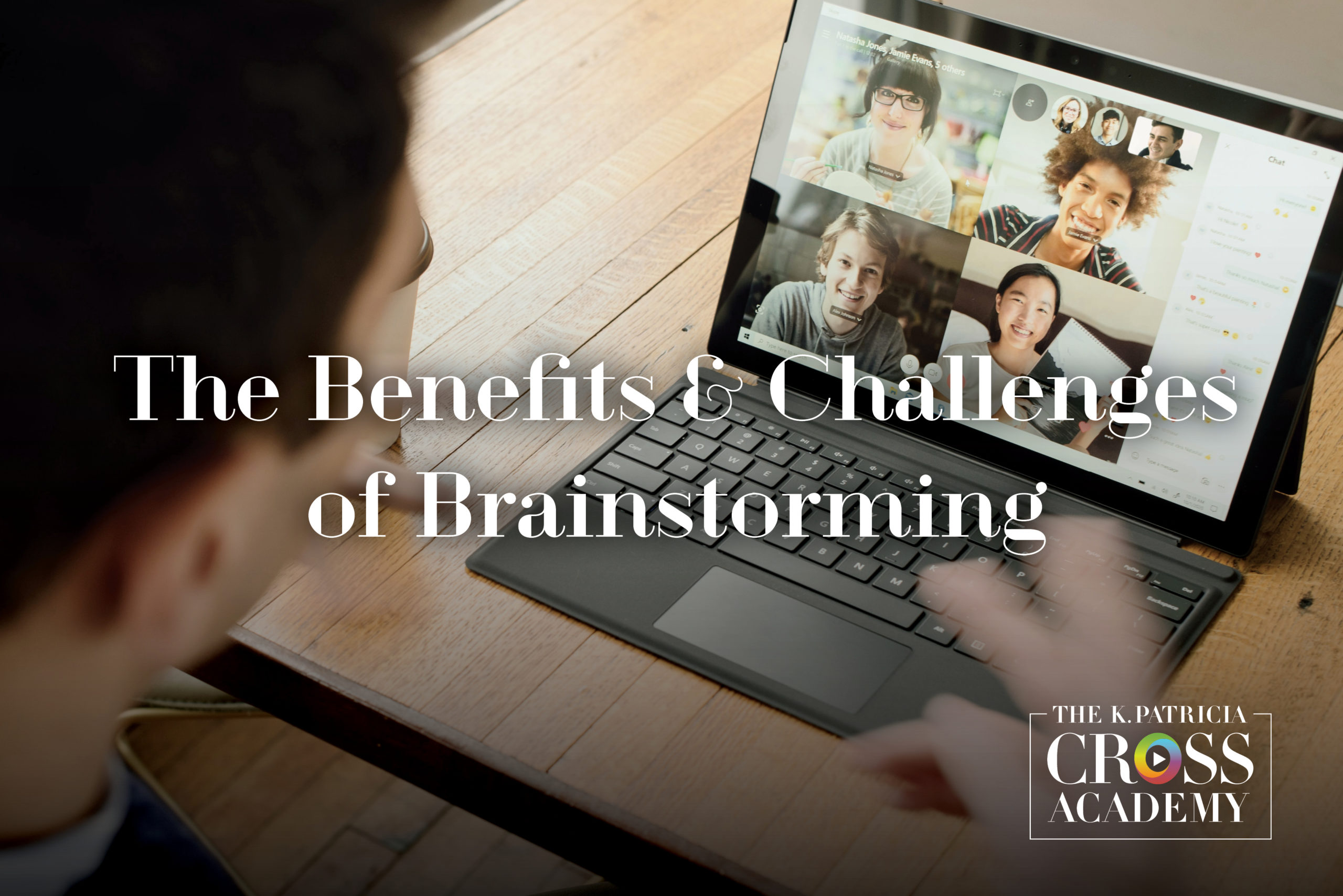
Brainstorming is a method of generating ideas and sharing knowledge to solve a problem. The defining characteristics of a good brainstorming session are when participants are encouraged to gather ideas spontaneously and to think without interruption. When done as a group, people typically collectively agree upon a solution after all the ideas are brought forth and discussed, but it can also be done individually. The technique of brainstorming has been around for over 70 years and is often used today to engage students in problem solving.
Brainstorming allows students to think critically about ideas and solutions, form connections, and share ideas with peers. The activity allows exploring and expanding a student’s ability to think critically and laterally. As students get actively involved, brainstorming aids the process of learning and improves academic performance.
 Often, there are no wrong answers when brainstorming; students can freely express their thoughts without fear of failure. Tools used for brainstorming and sharing include:
Often, there are no wrong answers when brainstorming; students can freely express their thoughts without fear of failure. Tools used for brainstorming and sharing include:
- Physical writing or drawing tools like paper, posterboard, or whiteboard
- Digital writing or drawing tools like Word, Photoshop, or any idea-mapping software
- Collaborative tools like Google Hangouts, Google Docs, or Zoom
Techniques vary, but there is a general structure to follow when developing brainstorming sessions. After the problem or issue is presented, students are organized into groups to brainstorm all possible ideas that could solve the problem. Discussion of these ideas takes place after the brainstorming session ends, usually after a defined time. Each idea is discussed and considered, some ideas are eliminated, and a final list is ranked for possible use as a solution toward solving the problem.
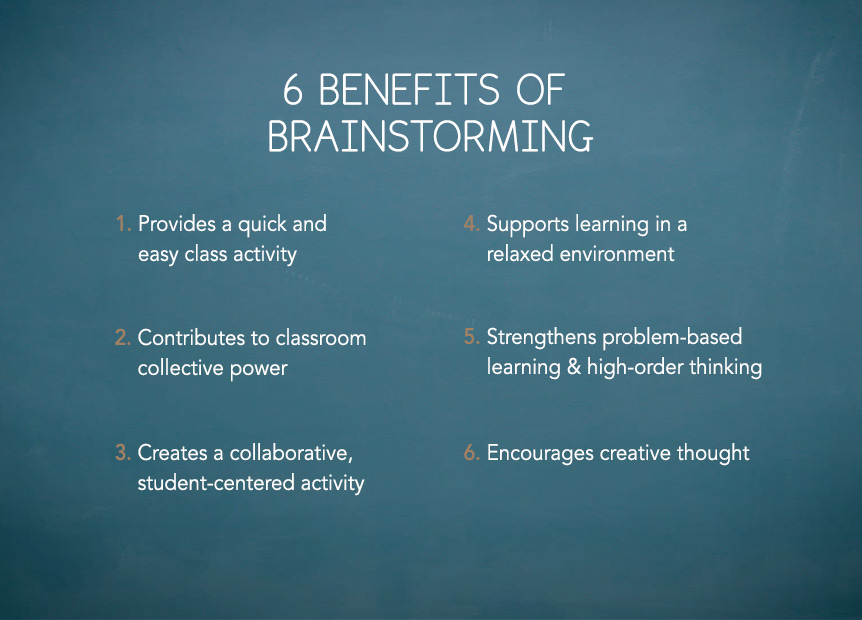
Benefits of Brainstorming
Brainstorming in the classroom can motivate students to spontaneously express their ideas and thoughts on a subject. As there are no wrong and right answers, the activity provides students with a platform where they can voice their thoughts without fear of failure. Brainstorming gives the class a chance to tap into their previous knowledge and form connections between the current topic and what they have already learned. It also encourages them to listen and consider others’ ideas, thereby showing respect for their fellow classmates. In addition, brainstorming:
- Provides a quick and easy class activity. Brainstorming sessions can be effectively used in the classroom. However, they do require meaningful planning time for ultimate success.
- Contributes to classroom collective power. Brainstorming sessions allow individual students’ voices to become one with the group’s voice. The final ideas are generally identified through consensus.
- Creates a student-centered activity. Students direct the group in which they generate their own ideas, develop rating criteria, and are responsible for group dynamics.
- Supports learning in a relaxed environment. Students can collaborate in a comfortable, informal learning environment.
- Strengthens problem-based learning. Brainstorming is a problem-solving activity where students build on or develop higher order thinking skills.
- Encourages creative thought. Brainstorming encourages students to think creatively (out of the box), encouraging all students to share their ideas, no matter how far “out there” they may seem.
Challenges of Brainstorming
While brainstorming has many advantages, it also has some challenges. Following are some challenges with suggestions for mitigating them.
- Becoming just a chat session. The instructor should direct the session to keep students on task.
- Students in a group setting compete with one another rather than collaborate when generating ideas. The instructor can walk around the room and listen for inappropriate group behavior.
- Staying surface-level. The instructor can prompt for deeper, higher order thinking.
- Getting “buy-in” or acceptance from those who have participated in brainstorming who have never seen their ideas brought forth and acted upon. The instructor can work with any student who may be in this category and remark on their contribution to them personally, their group, and to the whole class.
- Getting quiet or independent students to actively participate. The instructor can explain that as part of this course all students are expected to bend a little which may have them participating in activities that might make them uncomfortable. It is best to avoid forcing.
- Helping groups to move forward if they are “stuck” and not able to generate ideas. The instructor can reconvene the group to review the problem or issue or provide an example of a possible solution.
- Reaching consensus. Getting students to reach consensus becomes less of a problem if all students are given equal time to provide input, feel like they are a valued member of the group, and are respected for their points-of-view.
Brainstorming sessions can be a useful strategy to encourage genuine collaboration and interaction in the classroom. Putting together a well-stated problem and careful planning strategies can lead to meaningful idea generation and idea building which can be used in solving problems or addressing specific course-related issues.
Cross Academy Techniques
To use brainstorming in your class, try the following techniques:

Comprehensive Factors List
In Comprehensive Factors List, students write all the relevant factors they can think of about a specific topic, drawing from course content and personal experiences.
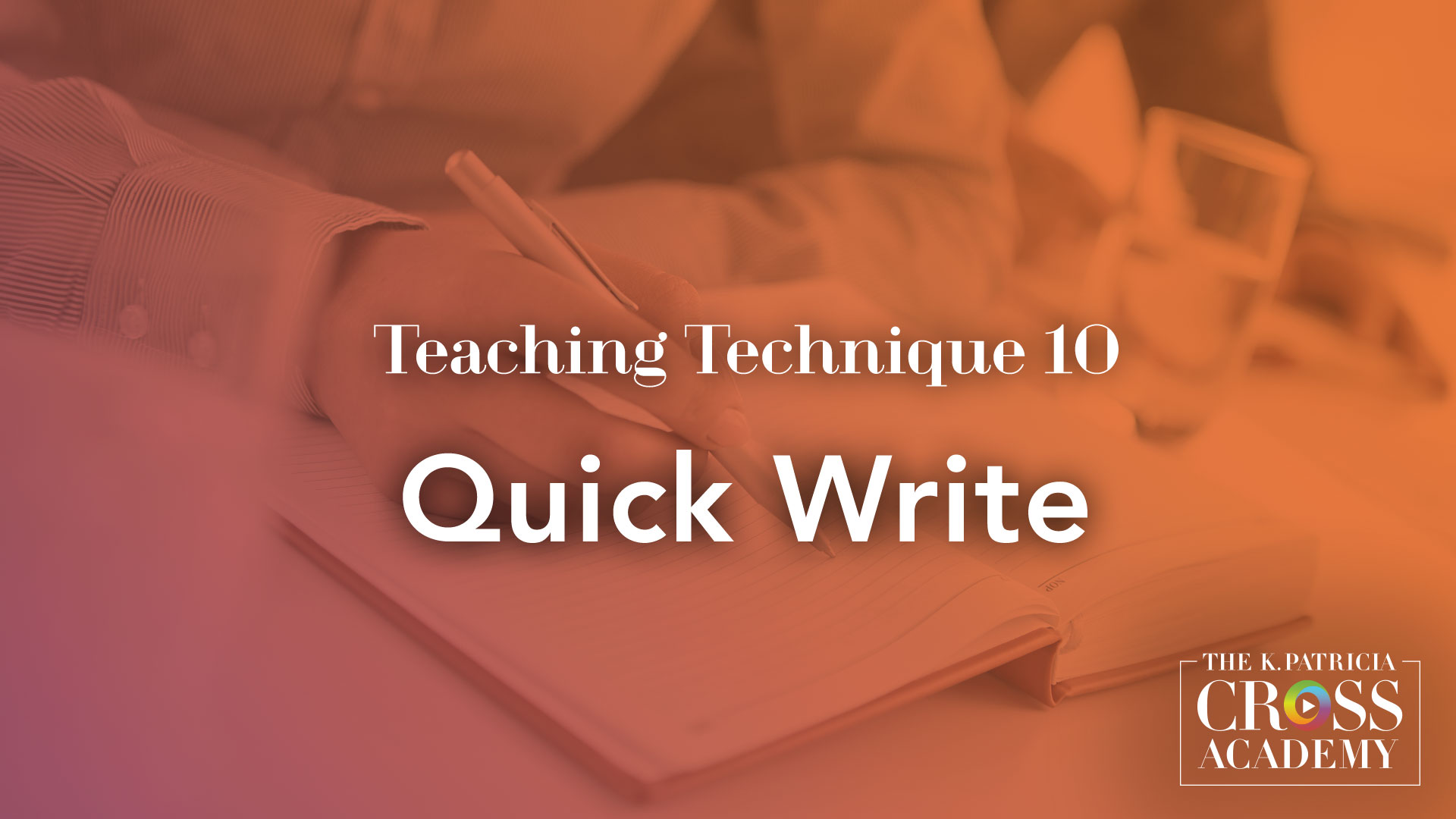
Quick Write
Quick Write is a learning assessment technique where learners respond to an open-ended prompt.
Enter your email below to receive information about new blog posts.
References
Baumgartner, J. (2005). Key factors to successful brainstorming. http://www.jpb.com/creative/keyfactors.php
Baumgartner, J. (n.d.). The complete guide to managing traditional brainstorming events. http://www.jpb.com/creative/brainstorming.pdf
Elkenberry, K. (2007). Brainstorming strategies: Seven questions that spur better solutions. https://www.sideroad.com/Meetings/brainstorming-strategies.html
Maricopa Community Colleges (2001). Brainstorming. http://www.mcli.dist.maricopa.edu/authoring/studio/guidebook/brain.html
Northern Illinois University Center for Innovative Teaching and Learning. (2012). Brainstorming. In Instructional guide for university faculty and teaching assistants. Retrieved from https://www.niu.edu/citl/resources/guides/instructional-guide
Storm, J. (2004). 10 deadly brainstorming ruts that kill innovation. https://www.brainstormnetwork.org/articles/10-BrainStorming-Ruts.pdf
Suggested Citation
Barkley, E. F., & Major, C. H. (n.d.). The benefits and challenges of brainstorming. CrossCurrents. https://kpcrossacademy.org/the-benefits-and-challenges-of-brainstorming/

Engaged Teaching
A Handbook for College Faculty
Available now, Engaged Teaching: A Handbook for College Faculty provides college faculty with a dynamic model of what it means to be an engaged teacher and offers practical strategies and techniques for putting the model into practice.
